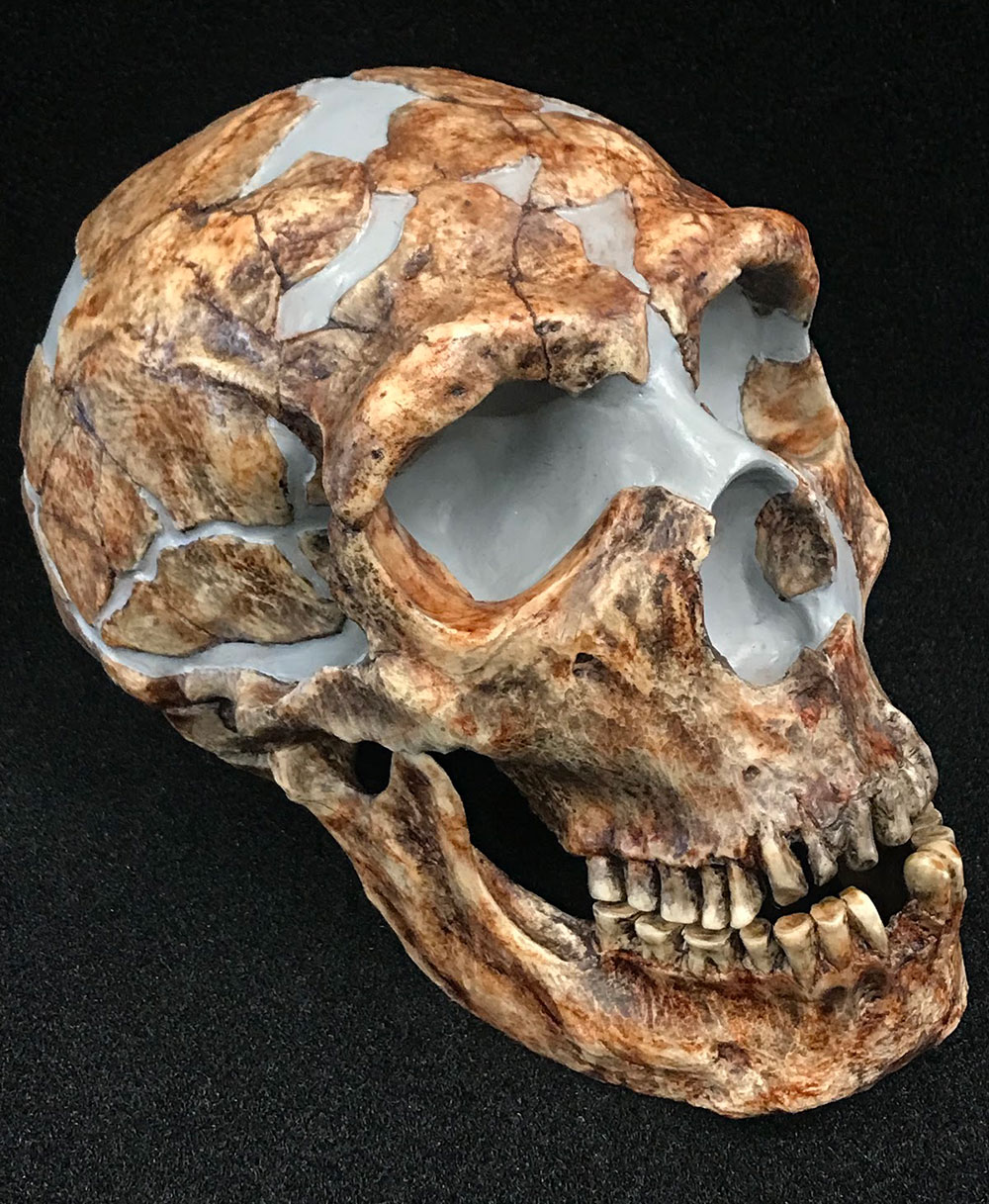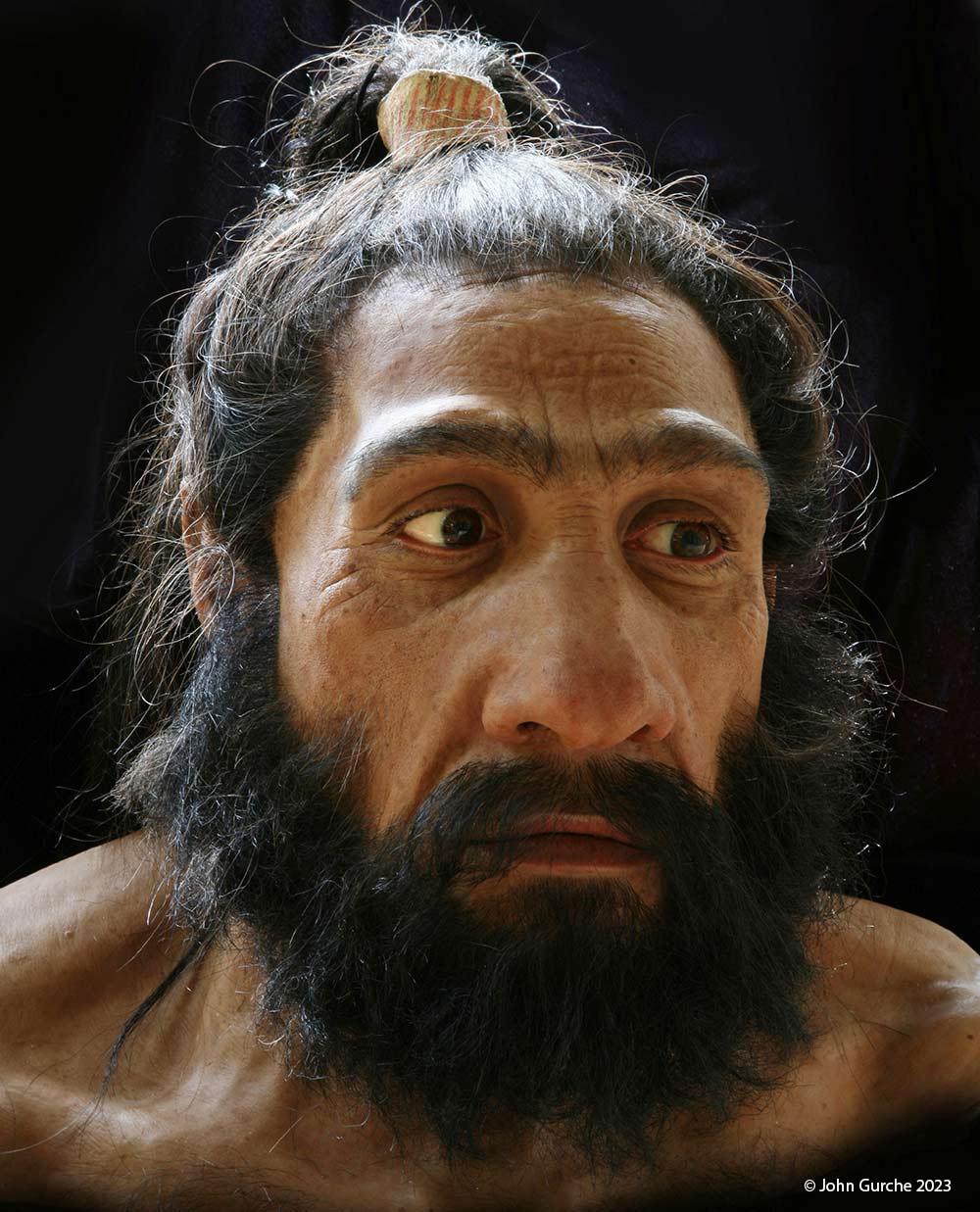Homo neanderthalensis
Skull Shanidar 1 - 73,000 - 40,000 Years Ago


Shanidar 1, a nearly complete skeleton of an adult male, was discovered by a team led by Ralph Solecki in 1957 in northern Iraq. This individual was approximately 40-45 years of age and likely died as a result of a rock fall into the cave where the remains were found (Solecki 1957). This individual survived many traumatic injuries during his lifetime including healed fractures to the left side of the skull and eye socket and a crippling injury to the right side, causing atrophy of the right humerus, radius, and ulna. Though the sequence of the assorted traumas of this individual are uncertain, it is thought that they occurred years before his death, which suggests some type of altruistic care among Neanderthals.
Middle Eastern Neanderthal skulls are less robust than those of European specimens in terms of the brow ridge, jaw, nose, and back of the skull and the skull bones are generally thinner by comparison. These differences probably represent adaptations to the warmer climate. The average brain size for Neanderthals is estimated at 1500 cc, larger than that of modern humans.
- Hominin Skulls - Select a Species
- Ardipithecus kadabba
- Ardipithecus ramidus
- Australopithecus afarensis
- Australopithecus africanus
- Australopithecus anamensis
- Australopithecus garhi
- Australopithecus sediba
- Denisovans
- Homo antecessor
- Homo erectus
- Homo floresiensis
- Homo habilis
- Homo heidelbergensis
- Homo naledi
- Homo neanderthalensis
- Homo rudolfensis
- Homo sapiens
- Kenyanthropus platyops
- Ororrin tugenensis
- Paranthropus aethiopicus
- Paranthropus boisei
- Paranthropus robustus
- Sahelanthropus tchadensis

